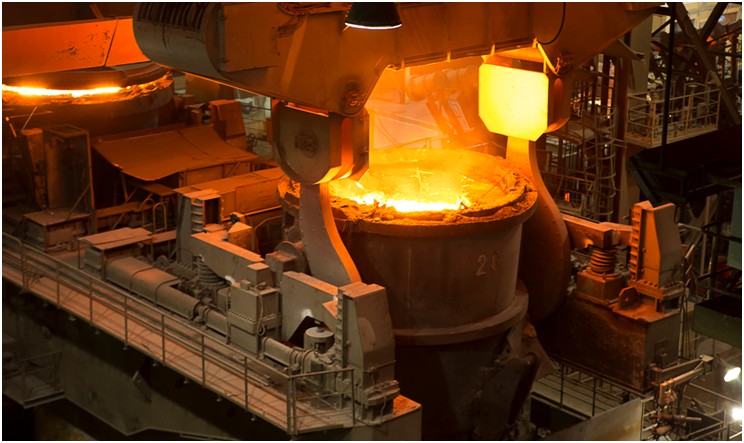Forging technology, an ancient art of human beings controlling the plasticity of metals, has ignited the fire of civilization evolution since the Bronze Age. From hand-forged cold weapons to intelligently controlled aviation forgings, the evolution of forging technology is essentially a history of human struggle to challenge the limits of materials. In China, this art not only carries the legend of Gan Jiang and Mo Ye, but also supports the backbone of modern industry. Forging technology is reshaping the manufacturing industry at an astonishing speed.
Image Source:699pic.com
The core of forging technology lies in the precise control of metal fluidity. Traditional forging relies on the experience of craftsmen, and repeatedly hammers to refine the internal grains of the metal, thereby improving strength and toughness. The Warring States iron sword unearthed in Baoding, Hebei, has clearly visible forging patterns on its surface, witnessing the ancient forging technology's profound understanding of material properties. Entering the industrial age, forging technology has achieved a qualitative leap: the roar of steam hammers replaced manual forging, the tonnage of presses rose from hundreds of tons to tens of thousands of tons, and the forging accuracy reached the micron level. Today, in the workshop of Erzhong Equipment, an 80,000-ton die forging press can forge steel ingots into nuclear power evaporator cylinders with a diameter of 10 meters. This "giant forging" technology has made China one of the few countries in the world that has mastered the ability to manufacture super-large forgings.
The breakthrough of modernforging technology is more reflected in the precise control of microstructure. The isothermal forging technology developed by Guizhou Aerospace Technology makes the grain size of the turbine disk of the aircraft engine reach ASTM 12 by precisely controlling the temperature difference between the die and the forging, which is equivalent to evenly distributing hundreds of millions of nano-grains on a coin-sized metal. This "fine-grain forging" technology has enabled the life of domestic turbofan engines to exceed 6,000 hours. In the laboratory of Northeastern University, researchers used the "multi-directional forging + gradient temperature control" process to successfully solve the problem of uniform internal quality of titanium alloy forgings, allowing the performance of the main load-bearing components of the landing gear of the C919 large passenger aircraft to reach the international leading level.
The intelligent transformation offorging technology is reshaping the production model. The "digital twin forging workshop" built by Jiangnan Shipyard Group simulates the forging forming process through 3D modeling software, infrared thermometers provide real-time feedback on the temperature field distribution, and hydraulic presses automatically adjust the impact force according to the algorithm. This intelligent forging system reduces the internal defect rate of large forgings by 80% and increases the material utilization rate to 92%. Even more impressive is that the "forging process brain" jointly developed by Huawei and Baowu Group uses machine learning to optimize forging parameters, shortening the production cycle of nuclear power evaporator forgings by 40%, marking that China's forging technology has entered the era of artificial intelligence.
The green revolution in forging technology has also made breakthrough progress. The "near-zero emission" electroslag remelting technology developed by CITIC Special Steel replaces traditional slag with plasma arc, reducing energy consumption in special steel production by 35% and reducing carbon dioxide emissions by 50%. At Shandong Haomai Group, the industrial waste heat recovery system converts heat from the exhaust gas of the forging furnace into steam, saving more than 20,000 tons of standard coal annually. These innovative practices promote the transformation of the forging industry to "green manufacturing" and contribute to the goal of carbon neutrality.
The boundaries of forging technology are still expanding. The material genome platform of Shanghai Jiao Tong University shortens the research and development cycle of new high-temperature alloys from 10 years to 3 years through high-throughput computing and experimental verification. At Northwestern Polytechnical University, laser additive forging composite technology realizes the integrated forming of titanium alloy components. This hybrid process of "printing + forging" is reshaping the manufacturing model of aerospace parts. What is more exciting is the cross-innovation of quantum computing and forging technology. The quantum simulation algorithm developed by Benyuan Quantum can accurately predict the diffusion behavior of metal atoms under high temperature and high pressure, providing theoretical support for superplastic forging.
Standing at the forefront of industrial change, forging technology is experiencing a paradigm breakthrough. From the roar of 10,000-ton forging hammers to the pulse of quantum computing, from the experience inheritance of traditional craftsmen to the precise control of artificial intelligence, China's forging technology is taking the lead in global industrial change. When digital technology is deeply integrated with traditional forging, and when green concepts run through the entire production process, this thousand-year-old skill will surely forge a more brilliant new chapter of industrial civilization.



